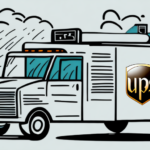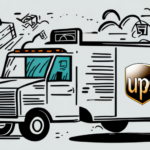Comparing the Benefits of Using the Post Office vs. UPS
Shipping your packages can be a hassle, but choosing the right service can make all the difference. In this article, we'll compare two popular options: the United States Postal Service (USPS) and United Parcel Service (UPS). We'll explore various factors to help you determine which service is best for your needs.
Shipping Options: Post Office vs. UPS Services
Both USPS and UPS offer a variety of shipping services tailored to different needs:
- USPS: Priority Mail, Priority Mail Express, First-Class Mail, Media Mail, Parcel Select
- UPS: Ground, Next Day Air, 2nd Day Air, 3 Day Select, Worldwide Express
USPS is a popular choice for affordable shipping options, with Priority Mail offering 1-3 day delivery at a flat rate. In contrast, UPS Ground typically takes 1-5 days depending on the destination.
If you need expedited delivery, UPS may be the better option with services like Next Day Air and 2nd Day Air that guarantee specific delivery times.
Both USPS and UPS provide tracking services. USPS includes tracking with Priority Mail and Priority Mail Express at no extra cost, while UPS offers comprehensive tracking across all services, including additional options like signature confirmation and insurance for an extra fee.
Rates and Cost Comparison
When comparing rates, consider the weight, size, and destination of your package:
- USPS: Generally offers lower rates for lighter packages.
- UPS: More competitive for heavier packages.
Both services provide discounts for frequent shippers and those who use their online platforms to print labels and pay for shipping. It's crucial to compare rates and delivery times based on your specific needs to find the most cost-effective option.
According to the USPS pricing guidelines and UPS Rate Calculator, accurate measurements and weight are essential to avoid additional fees.
Delivery Speed and Reliability
Delivery times vary based on the chosen service and destination:
- USPS Priority Mail: 1-3 days within the continental US.
- UPS Ground: 1-5 days depending on the destination.
- UPS Next Day Air: Guaranteed overnight delivery.
- USPS Priority Mail Express: Guaranteed overnight delivery.
Delivery reliability is generally high with both services, but factors such as weather, holidays, and peak seasons can affect delivery times. Planning ahead and allowing for extra time can help mitigate delays.
According to the 2023 UPS Delivery Times and USPS Delivery Standards, both services maintain robust timelines with minor variations.
Tracking and Monitoring Packages
Both USPS and UPS offer tracking services, but with some differences:
- USPS: Tracking is included with Priority Mail and Priority Mail Express. Additionally, USPS offers Informed Delivery, which allows you to preview incoming mail and track packages.
- UPS: Comprehensive tracking is available for all services, including real-time updates and delivery alerts.
While USPS includes tracking at no extra cost for certain services, UPS charges additional fees for advanced tracking options. For more detailed tracking features, refer to the UPS Tracking Services and USPS Tracking Tools.
Packaging Materials and Guidelines
Proper packaging ensures your items arrive safely:
- USPS: Offers free flat rate boxes for Priority Mail and Priority Mail Express. Guidelines emphasize using sturdy boxes with adequate cushioning.
- UPS: Sells branded boxes and packaging materials. Similar guidelines stress the importance of sturdy packaging and appropriate cushioning.
For oversized or heavy items, both services recommend using larger boxes and additional protective materials like bubble wrap or foam inserts to prevent damage during transit.
Insurance and Protection Options
Protecting your packages against loss or damage is available through both USPS and UPS:
- USPS: Priority Mail includes $50 insurance, and Priority Mail Express includes $100 insurance. Additional coverage can be purchased.
- UPS: Offers insurance options based on the package's value, with higher coverage available for an extra fee.
It's essential to assess the value of your package and the potential risks involved when selecting an insurance option. Refer to the UPS Insurance Options and USPS Insurance Services for more details.
International Shipping Options
Both USPS and UPS provide international shipping, but with distinct features:
- USPS: Offers Priority Mail International and First-Class Mail International. Delivery times range from 6-10 business days.
- UPS: Provides Worldwide Express and Worldwide Expedited, with delivery times as fast as 1-3 business days.
International shipping involves additional considerations such as customs fees, regulations, and potential restrictions on certain items. It's crucial to research the destination country's import policies before shipping.
For comprehensive guidelines, visit the UPS International Shipping and USPS International Services pages.
Customer Service and Support
Effective customer service can significantly enhance your shipping experience:
- USPS: Offers support through physical locations, phone lines, and online resources. In-person assistance is available at post offices.
- UPS: Provides 24/7 customer service via hotline, live chat, and callback options. Online support is extensive with real-time assistance.
UPS generally has more advanced digital support channels, while USPS provides the advantage of in-person assistance. Depending on your preference for support, one may be more suitable than the other.
Visit the UPS Help Center and USPS Help for more information.
Environmental Impact and Sustainability
Both USPS and UPS have initiatives to reduce their environmental footprint:
- USPS: Utilizes sustainable packaging options and energy-efficient vehicles. Committed to reducing waste and improving recycling efforts.
- UPS: Invests in alternative fuel vehicles and has a goal to achieve carbon neutrality by 2050. Implements green building practices and sustainable packaging.
Consumers can contribute by choosing eco-friendly shipping options, such as slower delivery speeds that reduce emissions or consolidating shipments to minimize packaging waste.
Learn more about USPS's sustainability efforts here and UPS's sustainability initiatives.
Conclusion
Choosing between USPS and UPS for your shipping needs involves evaluating factors such as shipping options, rates, delivery speed, tracking, packaging, insurance, international capabilities, customer service, and environmental impact.
By carefully considering these aspects, you can select the service that best aligns with your requirements, ensuring your packages are delivered safely and efficiently.






















